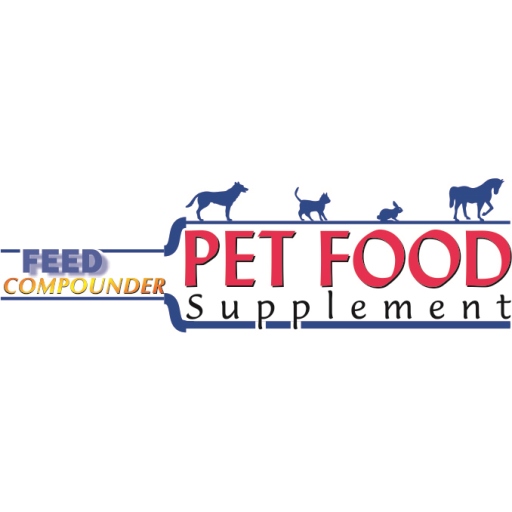Trust – The currency that drives business growth in the 21st Century
By David Primrose, Petfood Consultant, Synergy Petfood
Trust – What is it and why does it matter?
Trust is intangible and we can’t touch it. However, it plays a highly significant role in shaping our daily lives, with both positive and negative outcomes, as outlined in the following examples: –
- Positive – building personal and business relationships; buying petfood that pet owners believe will actively support their pet’s health.
- Negative – regional conflicts; the effect of Dilated Cardiomyopathy (DCM) on sales of “grain free” petfood.
Like all commercial enterprises, trust matters as it drives the success of the global petfood industry. History records that trust in commercial petfood was damaged by the melamine crisis of 2007 – 2008. This resulted in the largest and most costly recall in petfood industry history and the deaths of 000’s of pets. Anecdotal evidence also indicates that more pet owners became interested in making “homemade” petfood.
Trust or mistrust affects all aspects of business performance both internally and externally: –
- Internal effects – engaged workforce, with greater employee retention and increased productivity.
- External effects – customer brand loyalty; supplier relationships; relationship with regulatory authorities.
Collectively these trust / mistrust effects reach across all stakeholders involved in the petfood supply chain, including willingness of pet owners to purchase a petfood brand.
Trust is also important when it comes to innovation and market implementation of new products and impacts success, this is an important factor when we consider the need to implement sustainable raw materials and new food processing technologies in the petfood industry.
Humanisation of petfood and future evolution
Commercial petfood dates to the 1860’s with Spratt’s dog biscuits, with wet petfood entering the market in the 1920’s and dry kibble petfood appearing in the 1950’s. This indicates that petfood innovation is not new and continues to drive market growth now and in future.
For many years, the concept of humanisation has driven both market growth and innovation in the petfood industry and this trend is expected to continue in future. The term “humanisation” of petfood does not have a formalised, harmonised definition and means different things to different people. For examples, it includes concepts like: –
- Pet owner perception of pets as “members of the family”
- Formulation of ingredients that promote health and wellness
- Expectation of human food industry standards e.g., “human” grade ingredients; human food industry manufacturing, quality, and safety standards
- Adoption of human beliefs e.g., organic ingredients, “free range” poultry, vegan / vegetarian and flexitarian food.
Why trust in petfood matters more than ever.
Trust in food and petfood is essential to ensure it is safe, nutritious, legal and of the quality expected. When any of these fails, trust is damaged and we, our pets and the petfood industry businesses suffer undesirable effects like illness or we lose business. Ensuring safety, nutritional adequacy, legality, and quality requires a petfood system.
In general terms, a (human) food system can be considered as a complex interlinked web containing: stakeholders e.g., consumers, food producers, retailers and regulatory authorities; processes e.g., food manufacturing, distribution, retail; and external influences e.g., climate, diseases, environment, and consumer beliefs that affect the production and consumption of food. This concept also applies to petfood, but why is it important?
Clearly trust in safe, legal, and nutritious petfood of the quality expected is key to both pet owners and petfood manufacturers. However, trust is more likely to become of increasing importance as the industry faces up to challenges in the 21st Century.
Petfood in the 21st century faces new opportunities and challenges.
Based on ongoing humanisation, sustainability is a key trend that is likely to translate into the petfood industry on a growing basis, as pet owners become increasingly aware of issues like climate change and raw material availability. As a concept, sustainability embraces many aspects around a common theme of efficient resource utilisation including land use, greenhouse gas emissions, energy, water, packaging, and ingredients.
In addition to consumers (pet owners) pushing development of sustainability, it is likely that other stakeholders including the petfood manufacturing sector (pet food manufacturers and suppliers), and regulatory authorities will also drive the sustainability agenda. To achieve sustainability goals, it is likely that the petfood industry will implement the use of alternative sustainable ingredients e.g., insect protein, microalgae-based oils, and the possibility of new food processing technologies. In implementing these novel technologies this will align the petfood industry with the human food sector’s sustainability initiatives and further enhance the concept of petfood humanisation.
Whilst the fact that pet owners will be one of the driving forces for sustainability will help ensure engagement with novel technologies (ingredients and food processing), the industry must ensure effective messaging to build trust in these.
Consumer acceptance of alternative food ingredients and novel food processing technologies.
Like all industries, the on-going success of the global petfood industry depends on innovation in other parts of the consumer goods sector, lack of innovation is seen as contributory factors in business failure of companies like Blockbuster and Toys R Us1. We see many examples where innovation in human food systems translate into petfood including the use of ingredients to promote gut health in both humans and pets e.g., probiotics and pre-biotics and technologies like High-Pressure Processing (HPP) used to extend shelf-life and control foodborne pathogens in human foods like guacamole and “raw” petfood.
Often new foods can be seen as “Frankenfood” for example genetically modified food ingredients. Another example of food that faced challenges with consumer acceptance is sushi. Whilst widely accepted in Japan, when first introduced outside the region western consumers were at first reluctant to engage with the concept of eating “raw” fish. However, in the US alone the market value of sushi restaurants was estimated at US$ 22 billion in 20192 indicating how “alternative” foods have been accepted.
Acceptance of sushi has been identified by researchers in the US and Australia as a model in prediction of consumer acceptance of insects3.
A critical success factor in successful implementation of innovative concepts is how we convey and present the benefits and opportunities to consumers who might distrust these, as outlined in the examples above.
The impact of (mis)information sources on trust
Like it or loathe it, we live in the digital era where social media is an important source of (mis)information that we are bombarded with 24 hours a day. This is an important determinant of how we believe in trust.
Depending on how we respond to this information means the difference from positive or negative outcomes and actions. We see this in all walks of daily life from military conflict, how we engage with new products and how we purchase the petfood used to feed our pets daily. An indication of the growing importance of on-line sources of information is indicated in research reported in the USA in April 20214, this showed that use of social media by US adults grew from 5% to 72% in the period 2005 – 2021.
The information we see on-line influences our decision-making process where we have trust or mistrust in an event or a product that affects how we respond, for instance petfood purchasing decisions.
For many years we have known that on-line information sources influence petfood purchasing decisions. For example, a 2021 report5 on “grain free” petfood purchasing decisions in North America and Europe, indicated that over 40% of dog owners used online resources to get their information about pet food with the actual number depending on different demographic information (country, age etc.). This research is also in line with other findings on the importance of online sources, as indicated in a report on the Italian petfood sector6.
These reports also indicate the importance of other information sources including veterinarians, veterinary staff, and pet stores in influencing petfood purchasing decisions.
Whatever information source is used the important factor is that, depending on pet owner perception of the information, it either builds trust in the petfood or damages it.
Due to the interdependencies and complexity of any food system, including petfood, for effective successful change e.g., implementation of sustainable ingredients like insect protein, a “systems approach” is required. This helps us understand the factors and interdependencies that can affect trust in the food that our pets eat. For example, climate change might mean that some “conventional” petfood raw materials are no longer sustainable e.g., fish oil used for health and wellness in petfood or meat from livestock farming. For nutritional adequacy and society demands on sustainability, we might then consider sustainable alternatives like algal oil or insect protein.
Whilst these might be feasible from a technological perspective, successful implementation requires us to adopt a systems approach which considers all stakeholders, processes and external influences outlined above.
One key success factor is consumer (pet owner) engagement. This is fundamental to building trust and enables us to overcome any concerns about the sustainable alternatives and explain the benefits. Consumers are not “homogeneous” in their beliefs and many factors play a key role in how we perceive “new” food / ingredients, for example microalgae, in the food we eat7.
Due to the need to implement change in the human food system e.g., for sustainability, there is a lot of on-going research into trust in food systems, including how we engage and communicate with consumers. This is an area where the petfood industry might benefit in terms engagement with pet owners.
The question is how can we best use social media and other approaches to implement (food) messaging effectively to engage with pet owners and build trust in development and implementation of “next generation” petfood ingredients?
The answer here might also lie in humanization, with the petfood sector adapting and adopting the learnings from consumer engagement in “new” food systems and next generation ingredients. Time will tell!
References
1. Innovate Or Die: How A Lack Of Innovation Can Cause Business Failure viewed on-line on 16th March 2022 at https://www.forbes.com/sites/biancamillercole/2019/01/10/innovate-or-die-how-a-lack-of-innovation-can-cause-business-failure/?sh=4ec902122fcb
2. Market size of the sushi restaurant sector in the United States from 2011 to 2019, with a forecast for 2020 and 2021 https://lb-aps-frontend.statista.com/statistics/1176560/sushi-restaurant-industry-market-size-us/
3. Disgust, sushi consumption, and other predictors of acceptance of insects as food by Americans and Indians; Matthew B. Ruby, Paul Rozin, Disgust, sushi consumption, and other predictors of acceptance of insects as food by Americans and Indians, Food Quality and Preference, Volume 74, 2019, Pages 155-162,
4. Social Media Fact Sheet, April 2021, viewed on-line at Demographics of Social Media Users and Adoption in the United States | Pew Research Center on 3rd March 2022
5. Article Source: Grains on the brain: A survey of dog owner purchasing habits related to grain-free dry dog foods; Banton S, Baynham A, Pezzali JG, von Massow M, Shoveller AK (2021) Grains on the brain: A survey of dog owner purchasing habits related to grain-free dry dog foods. PLOS ONE 16(5): e0250806. https://doi.org/10.1371/journal.pone.0250806
6. Vinassa, M., Vergnano, D., Valle, E. et al. Profiling Italian cat and dog owners’ perceptions of pet food quality traits. BMC Vet Res 16, 131 (2020).
7. Consumer views about the Next Generation proteins for food in Europe, Arvola et al (Nextgen protein Eu project)

Osteoarthritis is one of the most commonly diagnosed joint diseases in ageing dogs and is recognised as the progressive degeneration and remodelling of synovial joints as the cartilage becomes damaged and triggers an inflammatory response which can cause great discomfort. Anderson et al., (2018) estimated 11.4% of dogs over 8 years old were affected by osteoarthritis. Although osteoarthritis has a known genetic influence, the disease can be exacerbated by the dog’s activity levels, diet and their breed, with larger breeds commonly experiencing osteoarthritis at some stage. Glucosamine & chondroitin are ingredients commonly included in complete and complementary pet foods designed for joint health support for senior dogs. Glucosamine regulates the synthesis of collagen in cartilage, whereas chondroitin inhibits the destructive enzyme pathway which breaks down the cartilage and joint fluid (Bhathal et al., 2017). Alongside this, both ingredients contribute towards the creation of glycosaminoglycans and proteoglycans, which are recognised for being building blocks for cartilage formation (Beale, 2004). Also supporting the body’s natural anti-inflammatory response is the organic sulphur compound Methylsulphonylmethane (MSM) (Brien et al., 2008).
Supplementation of pet foods with omega-3 fatty acids for a period of 6 months significantly improved the ability of geriatric dogs to rise from a resting position, and improved comfort whilst walking (Roush, 2010). Omega-3 fatty acids have been shown to support the anti-inflammatory response through increasing eicosanoids and reducing the activities of proteoglycan-degrading enzymes. Omega-3 fatty acids are commonly found in ingredients such as marine algae and fish oils. Furthermore, supplementing omega-3 fatty acids to senior dogs can also help support the immune system and positively modulate the gut microbiome when challenged (Fritsch et al., 2010).
Digestive health and fibre
Over time, senior dogs gut microbiota shows a gradual reduction in beneficial bacteria and an increase of facultative anaerobes which can generate an inflammatory response and increase oxidative stress (Pilla and Suchodolski, 2019). Changes in gastrointestinal function can result in inconsistent stool quality, longer colonic transit time and inefficient absorption of nutrients. The inclusion of fermentable fibre within the diet can significantly reduce the risk of enteric infection and improve nutrient absorption to overall improve quality of gut health and stools (Ephraim et al., 2020). Prebiotics such as fructooligosaccharides (FOS) and mannanoligosaccharides (MOS) promote the growth of the ‘good bacteria’, Lactobacillus and Bifidobacterium (Swanson et al., 2002). Diets for senior dogs should also contain sufficient fibre to ensure adequate intestinal motility, typically this is included in pet foods with ingredients such as sugar beet pulp.
Cognitive health
Senior dogs may experience age related cognitive decline as a result of oxidative damage caused by free radicals which can lead to dysfunction of neural cells (Head et al., 2007). Dietary antioxidants like vitamins E and C, and selenium may be important in helping to maintain antioxidative defence in older dogs. Cognitive dysfunction syndrome (CDS) results from irreversible degeneration of the brain beyond normal aging, including changes in brain glucose metabolism and is more severe than age related cognitive decline. Salvin et al., (2010) estimated that 14.2% of dogs 8 years and older are affected by CDS. Prevalence of CDS increases with age but remains under-diagnosed by veterinarians. Dietary supplementation with medium-chain TAG (MCT) has been shown to improve cognitive function in aged dogs (Pan et al., 2010; Pan et al., 2017). There is consideration for the inclusion of omega-3 fatty acids to support cognitive health in ageing dogs.


James Kyffin is the commercial director for animal health at ADM’s Protexin business and the business development director for the Pet and Animal Well-being division of ADM Health & Wellness. He is a qualified veterinary surgeon, having qualified from the University of Bristol in 2005. After five years working in small animal clinical practice in the UK, he joined ADM Protexin and has filled a variety of roles within the business over the last 12 years.

